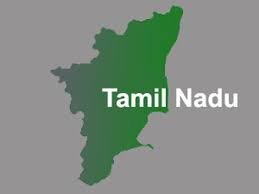Expanding the Boundaries: Tamil Nadu’s Revised State Area and Its Implications
Introduction Tamil Nadu, a state known for its rich history and cultural heritage, has recently undergone a significant change in its geographical boundaries. The expansion of Tamil Nadu’s area, as officially recognized by the Survey of India, is a development that has sparked considerable interest across the country. This article explores the details of this expansion, its implications, and its relevance to students preparing for various government exams.
The Revised Area of Tamil Nadu The Survey of India has revised the total area of Tamil Nadu, resulting in a substantial increase. The state’s area has now been officially updated to 1,30,060 square kilometers. This revision reflects a comprehensive and accurate mapping process that accounts for the latest geographical data. The increase in the state’s area is not just a matter of numbers but has broader implications for the state’s governance, resource management, and development planning.
Implications of the Expansion The expansion of Tamil Nadu’s area can have several significant implications. Firstly, it may affect the state’s administrative divisions, leading to a potential reorganization of districts and constituencies. This could impact political representation, resource allocation, and development programs. Secondly, the revised area may influence the state’s environmental policies, particularly in the management of natural resources like forests, rivers, and coastal areas. Finally, this expansion may also play a role in Tamil Nadu’s economic planning, as it could open up new opportunities for industrial development, tourism, and infrastructure projects.
Impact on Tamil Nadu’s Development The revision of Tamil Nadu’s area could serve as a catalyst for further development in the state. With a larger geographical area, the state government may focus on enhancing connectivity, infrastructure, and public services in newly recognized regions. This expansion could also lead to an increase in state revenue through better management of land resources, thereby contributing to the overall economic growth of Tamil Nadu.
Challenges Ahead While the expansion of Tamil Nadu’s area presents numerous opportunities, it also poses certain challenges. The state government will need to address issues related to land disputes, environmental conservation, and equitable resource distribution. Moreover, there may be a need for additional funding and manpower to effectively manage the newly recognized areas. These challenges must be addressed through careful planning and collaboration between various government agencies and stakeholders.
Conclusion The revision of Tamil Nadu’s state area is a significant development with far-reaching implications. For students preparing for government exams, understanding this change is crucial as it touches upon various aspects of governance, geography, and public administration. As Tamil Nadu embarks on this new chapter, it will be interesting to see how the state leverages its expanded boundaries for growth and development.

Why This News is Important
Impact on Governance and Administration The revision of Tamil Nadu’s state area is a critical development with direct implications for governance and administration. The expansion may necessitate changes in administrative boundaries, leading to the potential reorganization of districts and constituencies. This, in turn, could impact political representation, resource allocation, and the execution of development programs. Understanding these changes is essential for students preparing for exams related to public administration and governance.
Economic Implications The increase in Tamil Nadu’s geographical area could significantly impact the state’s economy. With more land to manage, the state government may explore new avenues for industrial development, tourism, and infrastructure projects. These economic opportunities could lead to increased state revenue and job creation. For students focusing on economics and state development, this news provides valuable insights into how geographical changes can influence economic planning.
Environmental Considerations The revision of the state’s area also brings environmental considerations to the forefront. The expansion may affect the management of natural resources such as forests, rivers, and coastal areas. Understanding these environmental implications is important for students interested in environmental studies, as it highlights the challenges of balancing development with conservation.
Relevance to Competitive Exams For students preparing for competitive exams, this news is particularly relevant as it covers a wide range of topics, including geography, governance, economics, and environmental studies. The expansion of Tamil Nadu’s area is a current event that could be featured in exam questions, making it important for students to be well-informed about the details and implications of this development.
Historical Context
Background on Tamil Nadu’s Geographical Changes Tamil Nadu, located in the southern part of India, has a long history of geographical and administrative changes. Over the years, the state’s boundaries have been altered several times due to various factors, including political decisions, natural calamities, and advancements in mapping technologies. The most recent revision of Tamil Nadu’s area by the Survey of India is a continuation of this historical trend. The updated geographical data reflects the state’s evolving landscape and the need for accurate and up-to-date mapping for effective governance.
Previous Revisions and Their Impact In the past, changes in Tamil Nadu’s geographical area have led to significant developments in the state’s administrative structure. For instance, the creation of new districts and the redrawing of boundaries have often been driven by the need to improve governance and resource management. These historical precedents highlight the importance of accurate geographical data in shaping the state’s administrative and development policies.
Relevance to India’s Federal Structure The revision of Tamil Nadu’s area is also significant in the context of India’s federal structure. Changes in a state’s geographical boundaries can have implications for its relationship with the central government, particularly in terms of resource allocation, representation in the Rajya Sabha, and the distribution of central funds. Understanding this historical context is crucial for students studying Indian polity and federalism.
Key Takeaways from Tamil Nadu’s Revised State Area
| Serial No. | Key Takeaway |
|---|---|
| 1 | Tamil Nadu’s state area has been revised to 1,30,060 square kilometers. |
| 2 | The expansion may lead to changes in administrative divisions and resource allocation. |
| 3 | The revised area could impact the state’s economic planning and development projects. |
| 4 | Environmental policies may need to be adjusted to manage the expanded geographical area. |
| 5 | The revision is relevant for students preparing for exams in geography, governance, and public administration. |
Important FAQs for Students from this News
1. What is the new revised area of Tamil Nadu?
The revised area of Tamil Nadu is 1,30,060 square kilometers. This update reflects the most recent data from the Survey of India.
2. How might the increase in Tamil Nadu’s area affect administrative divisions?
The increase in Tamil Nadu’s area may lead to a reorganization of districts and constituencies. This could impact political representation and the management of resources and development programs.
3. What are the potential economic implications of Tamil Nadu’s area expansion?
The expansion may open up new opportunities for industrial development, tourism, and infrastructure projects. It could also lead to an increase in state revenue and job creation.
4. How does the revision of Tamil Nadu’s area relate to environmental policies?
The revised area may impact the management of natural resources such as forests, rivers, and coastal areas. It may require adjustments in environmental policies to balance development with conservation.
5. Why is the expansion of Tamil Nadu’s area relevant for competitive exams?
Understanding the expansion is important for competitive exams as it covers topics related to geography, governance, economics, and environmental studies. It is a current event that could be featured in exam questions.
Some Important Current Affairs Links

















